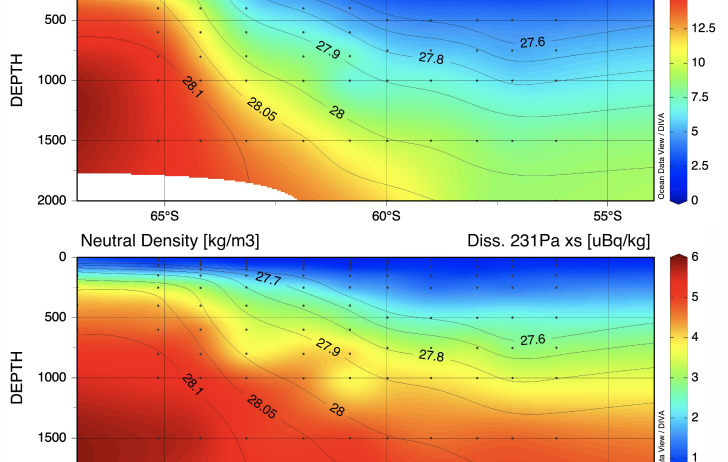Isopycnal mixing controls protactinium and thorium distributions in the Pacific Southern Ocean
Pavia and co-workers (2020, see reference below) determined the physical and chemical speciation as well as the vertical distribution of Protactinium-231 (Pa) and Thorium-230 (Th) at 12 stations across the Southern Pacific Antarctic Circumpolar Current. They confirm that Pa is preferentially adsorbed over Th by biogenic opal. A new finding is the observation of steep gradients of these tracers along neutral density surfaces from north to south, demonstrating the importance of isopycnal mixing in transporting these nuclides to the Southern Ocean. Because these tracers are widely used to constrain scavenging processes and reconstruct past vertical sedimentary fluxes, this sensitivity to physical transport suggests that Th and Pa may be used as sedimentary tracers of eddy mixing in this sector of the Southern Ocean, and invites future modelling efforts to further constrain this sensitivity.

Reference:
Pavia, F. J., Anderson, R. F., Pinedo‐Gonzalez, P., Fleisher, M. Q., Brzezinski, M. A., & Robinson, R. S. (2020). Isopycnal Transport and Scavenging of 230Th and 231Pa in the Pacific Southern Ocean. Global Biogeochemical Cycles, 34(12). DOI: https://doi.org/10.1029/2020GB006760

